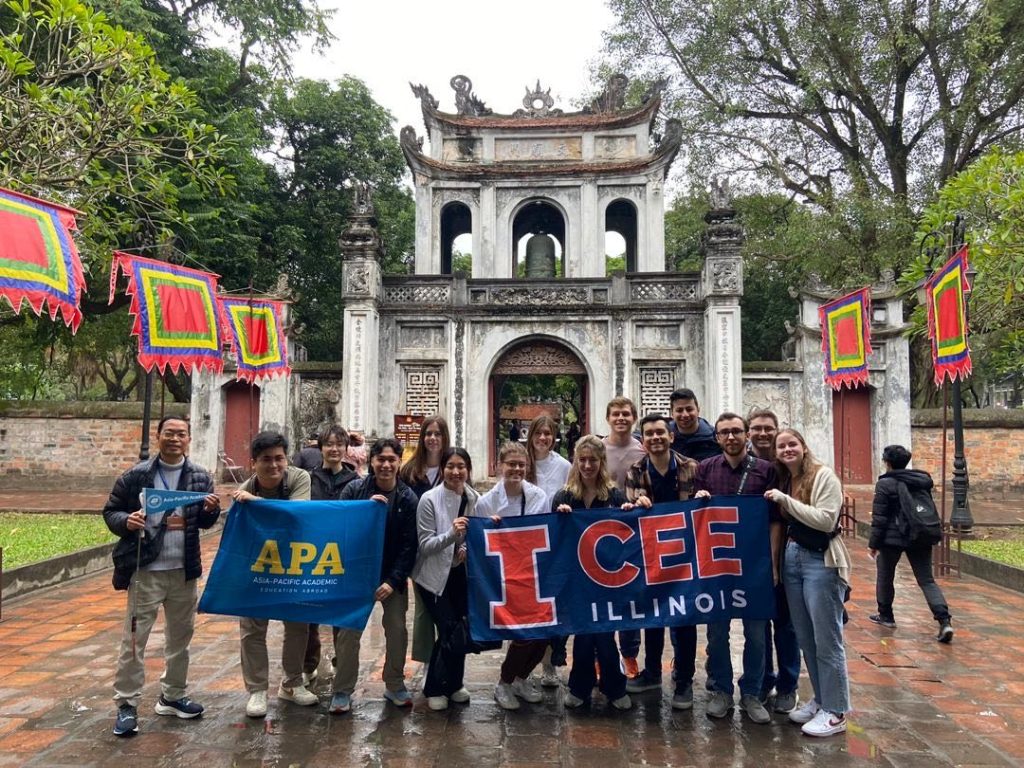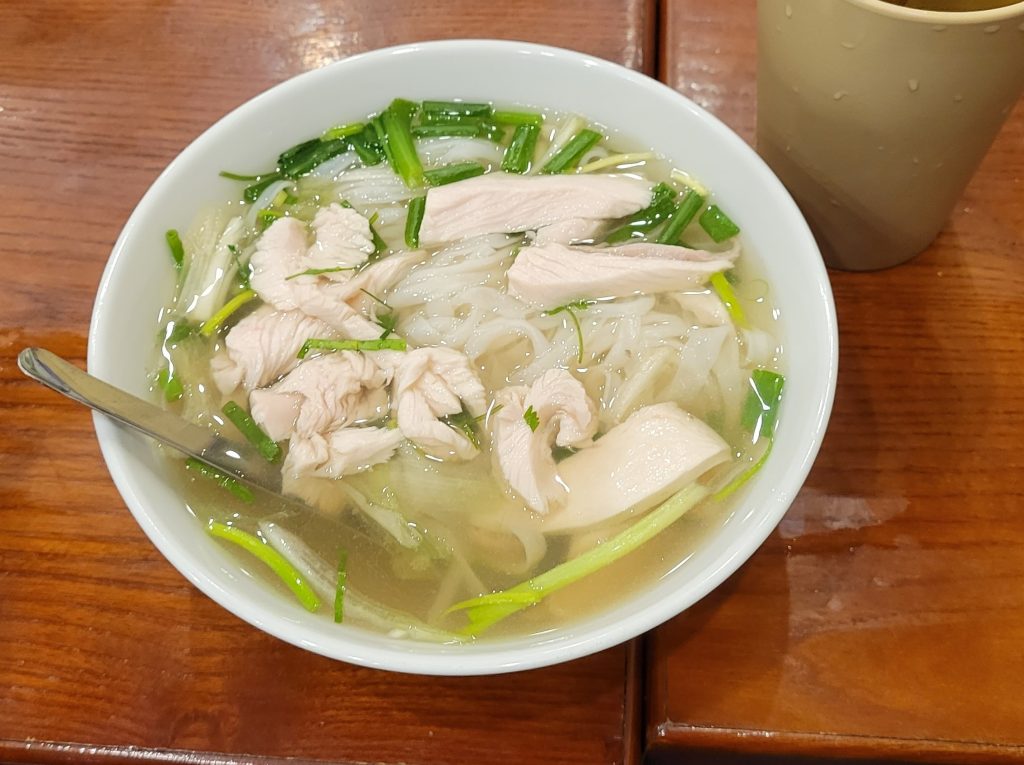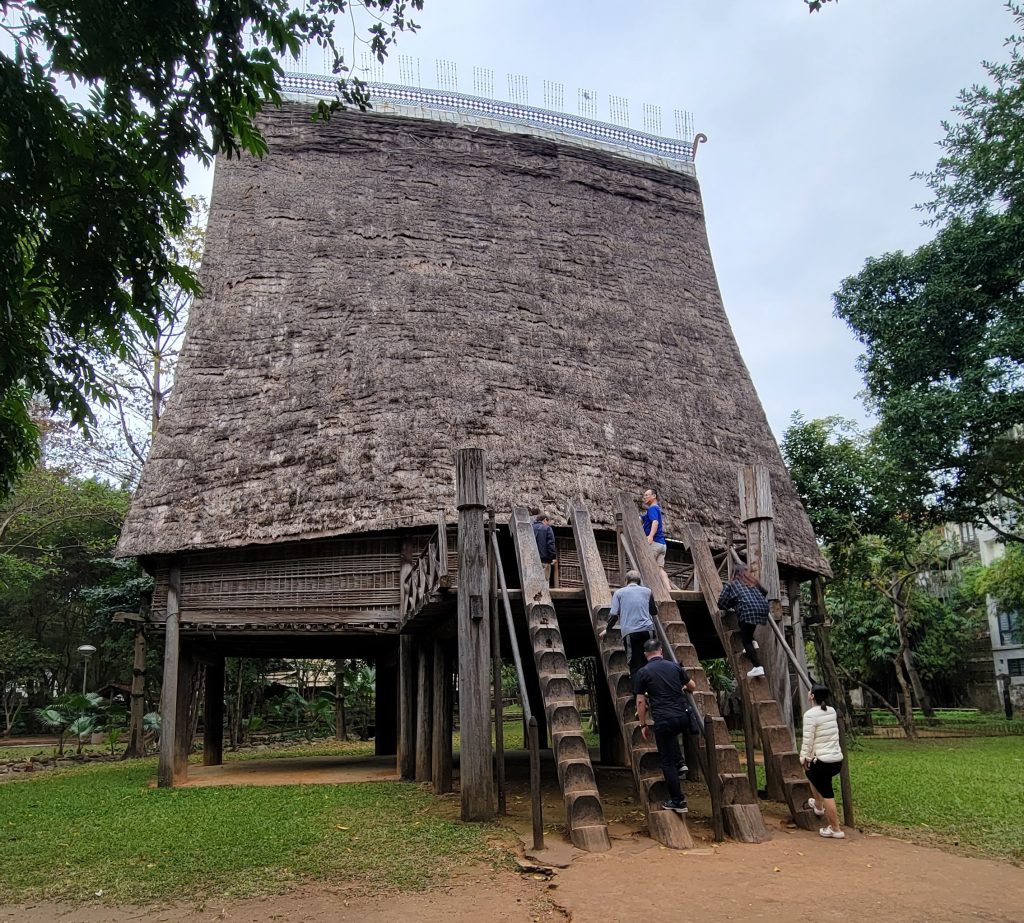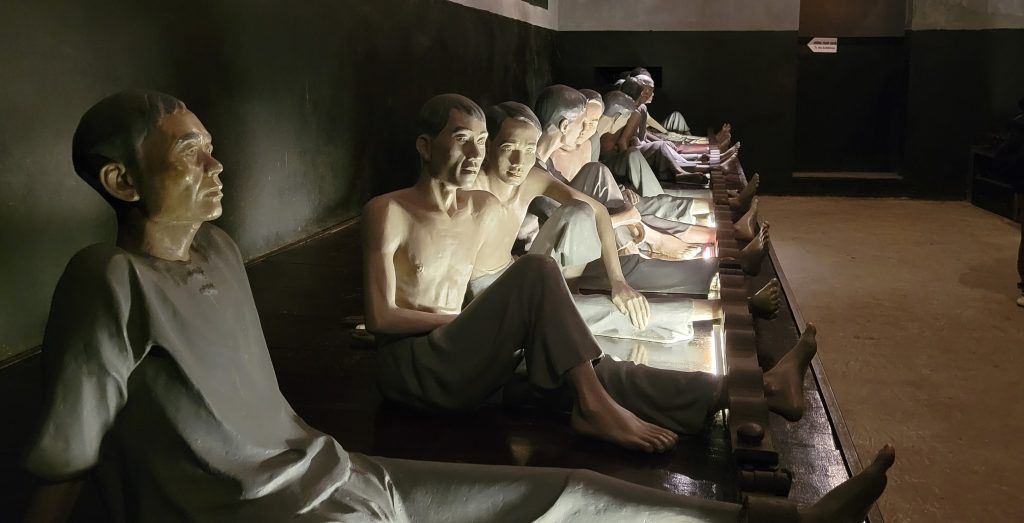Day one was an introductory tour to the sites of Hanoi. The city was shockingly rich in culture and history, however very chaotic as well. We learned that the city celebrated its 1,000 year anniversary in 2010, however the old quarter of the city has been inhabited continuously for almost 8,000 years.

The next stop was the Temple of Literature. The site was a uniquely old university and temple, a center for spreading Confucian ideas, and is also featured on Vietnamese Dong currency. The interior featured shrines to various educational figures as well as historical manuscripts, symbolic architecture, and musical instruments.

After our morning activities, we each tried chicken pho for lunch. Not only was it a local delicacy, it was also several of the students’ first time eating a full meal using only chopsticks! It was served with chili sauce, limes, and other spices to customize the dish.

After lunch, our next stop was the Museum of Ethnology. This museum discussed the 54 ethnic groups living within Vietnam. Our tour guide Mr. Long, did an amazing job comparing and contrasting the different groups’ cultures, explaining the traditional ceremonies, gender roles, social structures and more for each. The museum also featured artifacts from other countries in Southeast Asia as well.
That being said, the best part of the museum was actually behind it. Outside were full-scale recreations of the houses lived in by different ethnic groups, the most notable being a meeting hall on stilts. The stilts alone raised the floor of the building to nearly 12 feet tall, with the thatch roof reaching an estimated 55 feet tall. We were able to climb up and inside, once our shoes were off. This was only one of many buildings on the museum grounds.

The last major stop on our tour was the Hoa Lo Prison. By far the most macabre place on our tour, the prison showcased some of the worst humanity has to offer. The primary focus of the exhibit was French treatment of Vietnamese communist political prisoners, who were subjected to horrific living conditions and torture. Prisoners shared small cells oftentimes with more than 100 other prisoners. Many of the escapees from the few jailbreaks they had went on to become leaders of the Vietnamese Communist Party. This context helps detail the motives for Vietnamese rebellion against occupying forces.

The second exhibit in the prison was centered around the repatriation of American POWs during the Vietnam War. The prison was referred to as the ‘Hanoi Hilton’ by the Americans due to that location’s treatment of American POWs compared to other Vietnamese prisons. It is also the prison where US politician John McCain was held from 1968 to 1973.
Our final stop was for a quick picture at the St. Joseph Cathedral. The cathedral was beautiful, but we also learned what rush hour in Hanoi looks like after almost getting hit by several motorbikes. We then left for the hotel, to conclude our tour of Hanoi and prepare for our welcome dinner.
Written by Dominick Tadewald
